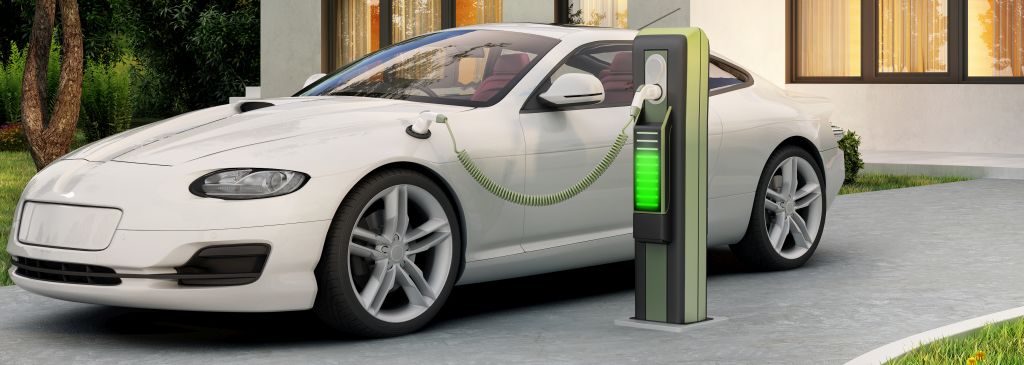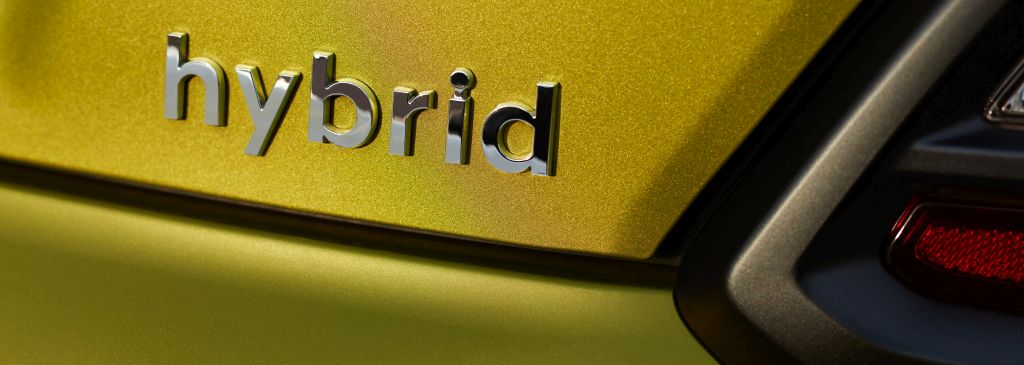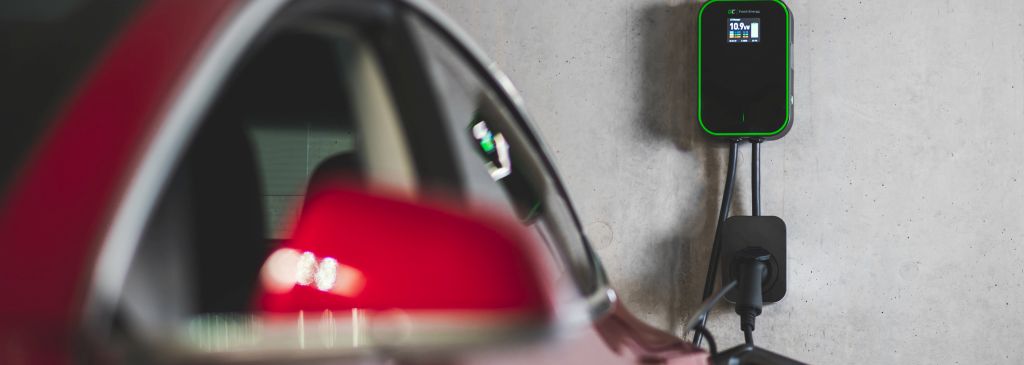Hybrid and electric cars are becoming increasingly popular among drivers, who want to limit their negative impact on the environment and cut down on fuel costs. Although hybrid cars are often chosen by users, many people still don’t realise how they actually work. Explore our comprehensive guide to hybrid vehicles!
In this article you will find out:
- what types of hybrid vehicles we know,
- how various types of hybrid cars operate,
- what a hybrid is made of and how you can charge it.
What is a hybrid?
A hybrid is a vehicle that runs on fuel engine combined with an electric motor. This combinations helps offset the defects of a conventional engine with its low thermal efficiency. Due to this drawback, only a small percentage of consumed fuel is used to power the vehicle components. You could say more than 50% of the fuel can be classified as energy losses.
An electric motor has none of these faults. It is a more economical and efficient solution. Unfortunately, a 1005 ‘green” car still has its limitations, so there’s still a a long way to go before they become our choice number one. For the time being, hybrids are doing a great job filling in the resultant gap.

Types of hybrid cars
The way a hybrid drive works depends on the type. You can distinguish between three main types:
- Micro hybrid – this vehicle uses the electric motor only as a start-stop system, before the internal combustion engine takes over. This is how the alternator and starter are replaced by a electric motor. That’s how the electric unit gains yet another important function – when the car is in motion, it assumes the role of a power generator and recovers energy when the driver slows down and brakes. The energy is then stored in the battery, which moves the crankshaft when the vehicle starts. This results in lower resistance and lower fuel consumption.
- Mild hybrid – it’s similar to the micro hybrid, but slightly more advanced. The electric motor is used mainly to recover the energy during vehicle braking, but also to support the internal combustion engine when the car accelerates. This is how less load is placed on the conventional engine when it normally consumes the most fuel.
- Full hybrid – this is what we usually mean when talking about hybrid vehicles. The electric motor is capable not only of recovering energy and supporting the internal combustion engine, but also of powering the car on its own.
How does a hybrid car work?
Hybrid cars can come in a few variants, the difference being how the electric motor is combined with the internal combustion engine. The main types are:
- series hybrids,
- parallel hybrids,
- series-parallel hybrids (power-split).
We will have a closer look at each of them to answer the question about structural differences.


Series hybrid
In this type of car the internal combustion engine is not connected to the wheels of the driving axle. This means the engine is responsible only for generating the energy that powers the electric motor, which powers the whole vehicle. In theory, series hybrids use two engines, but in fact it’s the electric motor that directly powers the car.
The major advantage of this solution is that the internal combustion engine is operating under optimum conditions at all times: with limited load and within a relevant rotation speed range. This results in lower fuel consumption. What is more, the car battery doesn’t have to be plugged in to the mains, because electricity is generated by the internal combustion engine. The engine starts when the energy in the battery runs low and reaches a certain level.
Parallel hybrid
In parallel hybrids the axles are powered with the internal combustion engine. The electric motor is secondary and auxiliary. This category includes models with a single or dual clutch.
In the single clutch system the connection between the electric motor and the internal combustion engine is fixed. This solution means it’s impossible to use only one engine at a time. Some cars in this category can operate in electric mode, but only when the speed is limited – e.g. when starting or in a traffic jam.
In the dual clutch system there is no fixed connection between the engine and the motor. The two are separated by a clutch, which means either unit can be used independently. In this case, the electric motor makes it possible to drive at a higher speed, when compared to the movement of the crankshaft.
At this point, it’s also good to mention axle split hybrids. In these cars there is no connection whatsoever between the electric motor and the internal combustion engine. Each unit powers a separate axle – for example, the internal combustion engine powers the front axle, while the electric motor powers the rear one. If both units are put to work at the same time, the driver uses a 4WD with a wide power range. This system will not replace the alternator and starter, though.
Series-parallel hybrid
As you may have guessed, this is a system which combines the features of the series and parallel hybrid. It includes a single internal combustion engine and two electric motors. The power of the engine is split , allowing for power paths from the ICE to the wheels that can be either mechanical or electrical. The wheels can be powered by either the internal combustion engine or the electric motor. This solution results in an impressive performance of the whole system. At the same time, the construction is relatively simple and reliable.


What is the construction of a hybrid vehicle?
The key element of a hybrid vehicle is a planetary gearbox, which connects the internal combustion engine, the power generator and the electric motor. It totals the torques and divides the rotational speed of the engine crankshaft between the wheels and the generator. You could say this element is equivalent to an electronically controlled gearbox.
In a hybrid vehicle, the electric motor is designed mainly to support the internal combustion engine in the most demanding moments, i.e. when the car starts and accelerates. Full hybrids make it possible for you to drive a long distance without ever launching the internal combustion engine.
An efficient regenerative braking system means a hybrid vehicle does not need external charging, at least in theory. The distance covered by the car powered by the electric motor doesn’t cost you anything, so it reduces your average fuel consumption. Each type of a hybrid car may come in the plug-in variant, with a high-capacity traction battery. This means a car like this can cover 20 – 50 km powered by the electric motor alone!
How to charge a hybrid?
A hybrid vehicle can be charged just like any other electric car. You can choose from among the following options:
- A socket in your garage – in order to use this option, you need a special charger, which usually comes with the car. Charging your car from a socket usually takes a long time, but due to their low capacity, plug-in batteries are replenished relatively fast.
- Wallbox – this device will speed up the charging process of your plug-in hybrid at home. You can connect it directly to the mains and install it e.g. on your garage wall. It seems that for low-capacity hybrid batteries a wallbox will not be necessary, but if you’re thinking of buying an electric car in the future, you may consider getting a wallbox now.
- A public charging station – a way to replenish your plug-in hybrid fast in public space. The fees for using this option will be higher than the cost of charging your car at home. On the other hand, these cars usually come with batteries that are too small to be charged with DC. Forget about fast charging stations and go for those with AC.


Is it a good idea to get a hybrid?
Now you know what a hybrid car is and how it works. It’s time to think of pros and cons of this solution to decide whether or not it’s a good option for you. You could compare it to either a vehicle with an internal combustion engine or with an electric car.
A hybrid car will definitely help you reduce fuel consumption, which makes it an economical, efficient and environment friendly vehicle. On the other hand, electric cars are even more environment-friendly, because they generate zero exhaust fumes and run on 100% green energy. If you obtain your energy from solar panels, you can rest assured that your activity poses no threat to the environment.
However, electric vehicles are not so popular in Poland yet. and many people find it hard to opt for one at this point. Some may find the range of an electric car insufficient, others may complain about the scarcity of public charging stations. Others yet may resent the high price of an electric vehicle. Such cars are still rather expensive.
All things considered, a hybrid car seems like an attractive solution. It combines the innovativeness of electric vehicles with the functionality of a car with an internal combustion engine. That’s what makes a hybrid a cost-effective, environment-friendly and practical option. It could also be a perfect bridge on your way to a fully electric vehicle.
If you want to go for a hybrid or an electric car, you will find a broad range of necessary accessories in our online store!
Veronica Jones
Related posts
Most viewed entries
- Polish Inventors Who Changed the World – Do You Know Them All?
- The Scariest Myths About Electronic Devices – Halloween 2024
- The history of bicycle – International Bicycle Day
- Electricity in a camper van on holiday – a conundrum easily solve
- Off-grid installation on a plot. Is it worth it?
- Charging your electric car at home without a wallbox

